Couture Cheat Sheet: From ‘Cristóbal Balenciaga’ to ‘The New Look,’ Meet All the Major Fashion Players in Two New Shows

Cristóbal Balenciaga – seen here in France in 1927 – gets the small-screen treatment in an eponymous Spanish production that covers 30 years of the virtuoso Basque designer's incredible life, including his work during the German occupation of France. Photo: Roger Viollet via Getty Images/Roger Viollet via Getty Images
Fashion is culture. And it’s entertainment – this winter, literally so.
Devoted followers of fashion are entering the French couture televisual universe thanks to two major biographical series: one about Cristóbal Balenciaga, the virtuoso Spanish couturier whose revolutionary sculptural clothing changed the course of haute couture; and the other focussed on pioneering French designers Gabrielle “Coco” Chanel and Christian Dior, who revived Paris fashion after the Second World War.
Cristóbal Balenciaga (now streaming on Disney+), a proudly Spanish production starring Alberto San Juan, 55, is in Spanish with a smattering of French and Euskara dialect, with English subtitles. The eponymous series spans about three decades of Balenciaga’s life (roughly the period during the Spanish Civil War, when he opened a second couture salon in Paris, until he closed it 30 years later). The dramatization covers the shifting couture industry context, his reasons for staying open during the Occupation of Paris, and the rise of 1960s prêt-à-porter and mass-manufactured clothing that marked the end of a fashion era.
The series opens at the 1971 funeral of Coco Chanel, where the Times (U.K.) fashion editor Prudence Glynn is stalking the retired couturier for an interview. Balenciaga had shuttered his house three years prior, on the cusp of the May 1968 general strike in Paris, declaring that there was “no one left to design for.” It was to Glynn that Balenciaga reluctantly gave the only in-depth interview he would sit for in his lifetime; he died the following year, at the age of 77. He recounts aspects of his work life in flashback.
Cristóbal Balenciaga features elaborate re-stagings of landmark Balenciaga collections (and tense backstage moments); of note, in spite of sculpting the showcases with modern fabrics, costume designers Bina Daigeler and Pepo Ruiz Dorado do a wonderful job conveying the dramatic drape and texture unique to vintage textiles.
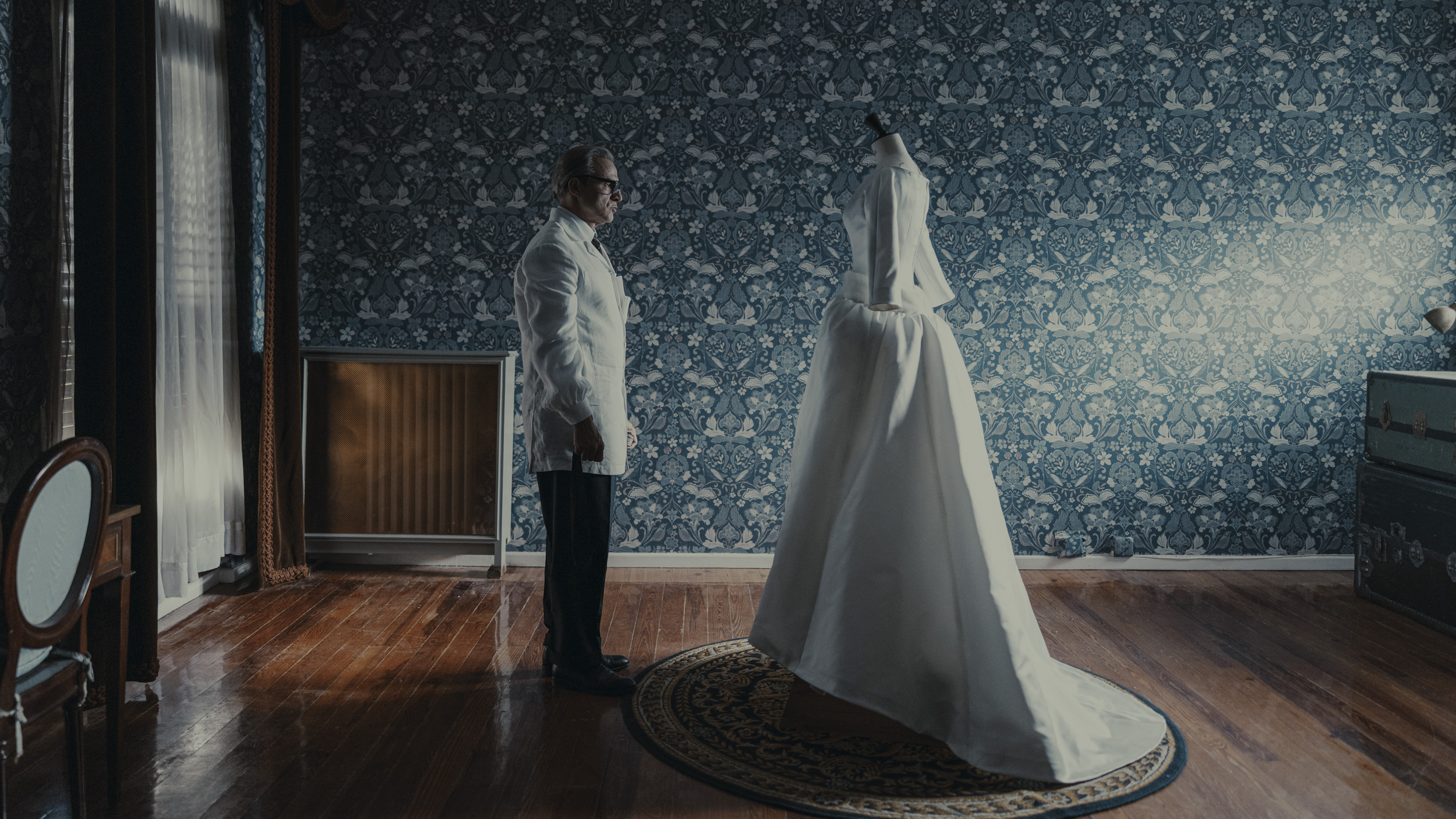
By contrast, in The New Look, barely anyone actively picks up a sketchpad or bolt of fabric at all, until the very end.
That’s because at heart, The New Look (streaming now on AppleTV+) is a social history of Paris during the Second World War through the lens of Paris fashion and the greatly diverging behaviours and attitudes of its main characters.
The framing device used by American showrunner Todd Kessler, 52, is an extended flashback, beginning with the 1955 return of Coco Chanel (played by French Oscar winner Juliette Binoche, 59) to Paris after nearly a decade in Switzerland, with plans to re-open her fashion house.
Chanel is bitter that Dior (Aussie character actor Ben Mendelsohn, 54) has reigned over Paris couture since his 1947 New Look collection (meanwhile, across town, he’s on stage as the first fashion designer to speak at the Sorbonne in their 700-year history). At this point, the narrative rewinds to the story behind her departure.
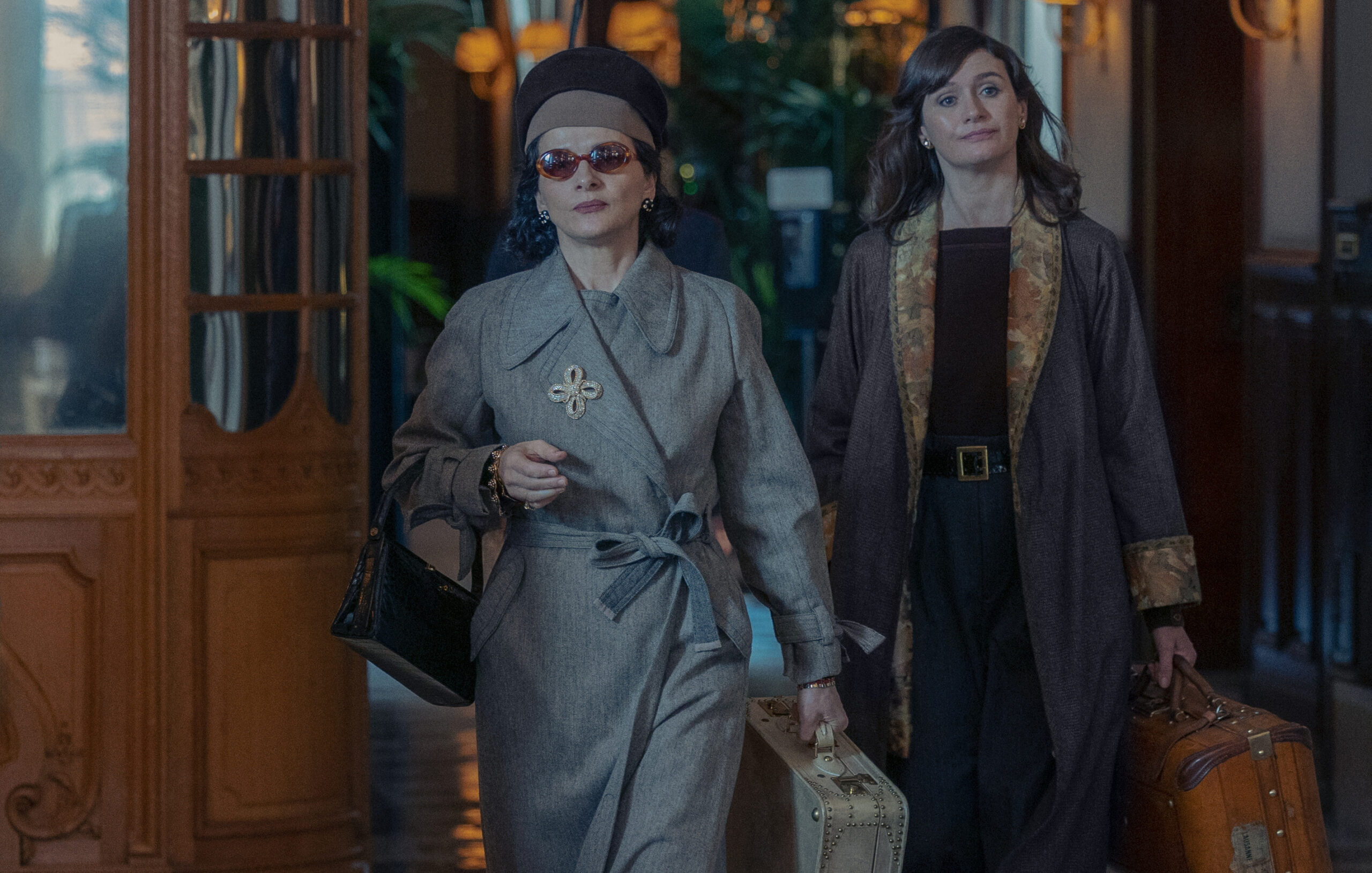
The New Look is a dual biography: you could call it Feud: Dior vs. Chanel, exploring their opposing attitudes and behaviours during the Nazi occupation of Paris. It’s inspired by true events and people – crucially, Dior’s sister, the French Resistance hero Catherine, whose full story was previously unknown until recently when it was excavated by British fashion journalist Justine Picardie. And several episodes are directed by Canadians Helen Shaver and Jeremy Podeswa.
With all the history and famous names in play, follow along with our cheat sheet as you watch either series. Because before their names became synonymous with luxury brands, they were designers carving out a legacy.
Cristóbal Balenciaga
Now: An edgy, streetwear-inflected high fashion brand (helmed by an ever-changing stable of mavericks like Nicolas Ghesquière and Demna). While its provocative ad campaigns court controversy and scandal, the brand courts influencers (celebrities like Justin Bieber and the Kardashians) and recently collaborated with upscale Los Angeles supermarkets Erewhon.
Then: A fiercely private and experimental Spanish designer considered the most enduringly influential creator in couture, who disdained publicity and was devoted, above all, to achieving perfection in every garment.
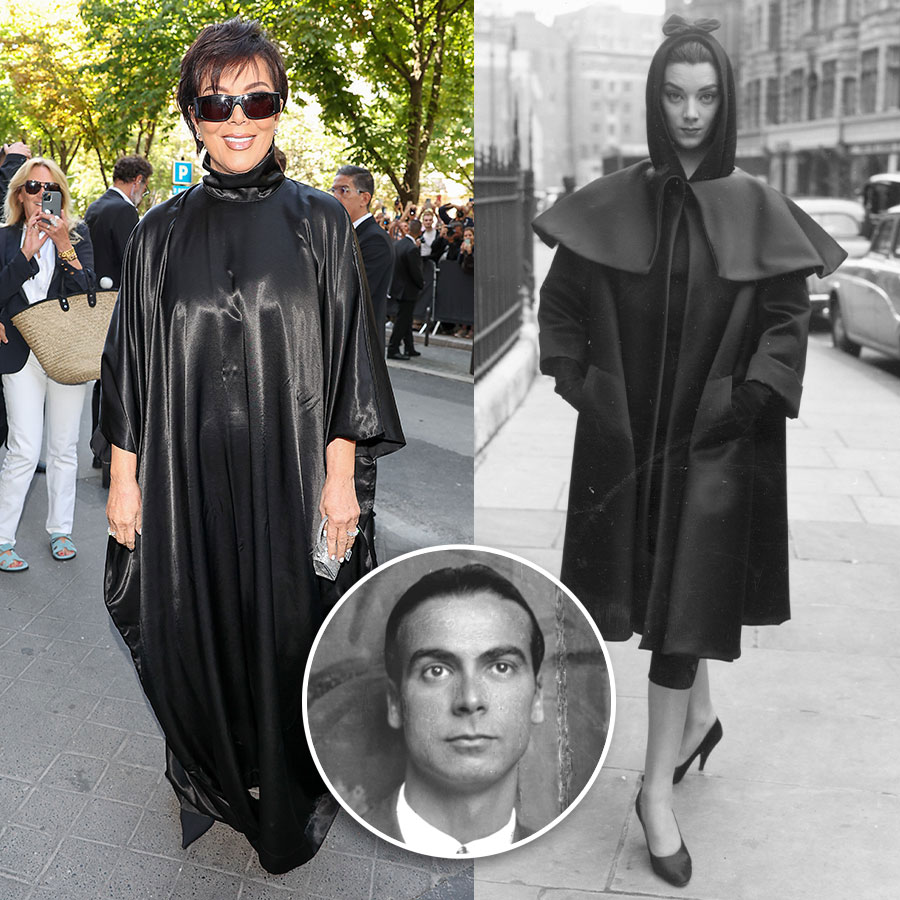
“When you saw his dresses, they seemed untouched. They floated, they moved, they created mystery,” Balenciaga’s close friend Hubert de Givenchy marvelled. Yet when Balenciaga opened a second salon in Paris in 1937, it was to largely indifferent early reviews. The Basque designer, who began working as a tailor’s apprentice at the age of 12 and founded his eponymous house in 1919, is remembered as a visionary perfectionist driven by obsession with creative control, from the set of a sleeve and placement of pins to designing his own fabrics and tutoring his models how to walk. Disney+’s lavish namesake series (“made with the exceptional support of Balenciaga and the Balenciaga Foundation,” we are told in the credits) explore this in a beautifully filmed portrait that seeks to finally reveal the man beneath the mystique.
Why he matters: His influence on fashion is still revered and his strong views on succession are suddenly timely. “Balenciaga makes no sense without me,” the character at one point declares, disdainful that Yves Saint Laurent continued Dior’s label after his untimely death. “How could others sign with my name? How can a body survive without a brain?” It’s a thought-provoking statement (one that British fashion designer Alexander McQueen also made) now that brands are far more important than their original creators.
German designer Jil Sander, after all, hasn’t designed the less-is-more label that bears her name since 2013. And Norma Kamali, 78, is currently teaching an AI system to replicate her design style (“downloading my brain,” as she told BOF).
Balenciaga’s heirs sold the brand and its assets in 1986 – the rest is now fashion history.
Coco Chanel
Now: The quintessential French luxury brand that, thanks to longtime designer Karl Lagerfeld (who died in 2019), is internationally recognized not only for its signature Chanel No. 5 perfume but for interlocking C logos, quilted 2.55 handbags, soft-shouldered tweed cardigan suits and many more house codes.
Then: Gabrielle “Coco” Chanel, who believed in functionality in clothing and the integrity of materials above all, and broke with tradition both in silhouette to free the waist from belle epoque corsetry and frippery with the little black dress. She championed unlikely materials such as jersey and tweed; ease of movement and self-reliance were her key tenets. Whether it was avant-garde artists or British aristocrats in the English countryside, Chanel metabolized the cultural influences from the circles in which she moved and applied them to artful commercial products. The designer, in her early 60s when the Second World War began, was charismatic and still had the power to beguile men such as Spatz, the nickname of her German Nazi officer lover, and Pierre Wertheimer, one of her Jewish business partners in the lucrative fragrance business. (Chanel’s current owners are the latter’s two grandsons.)
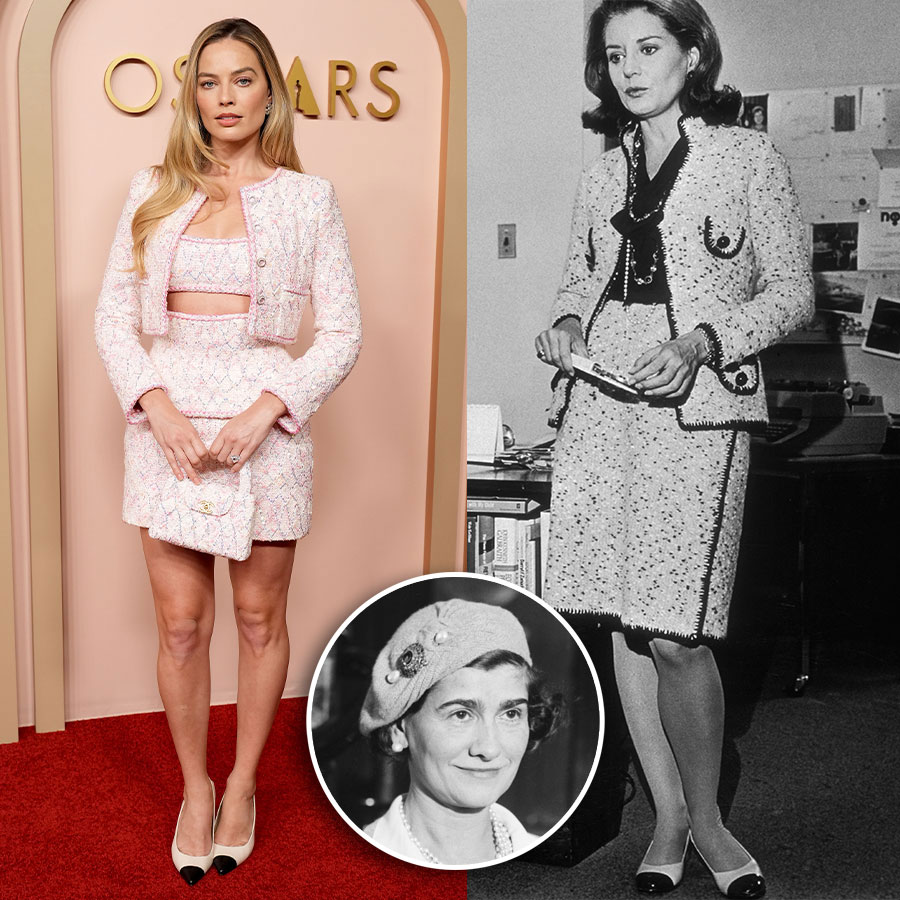
The Chanel No. 5 perfume she launched in 1921 is an undisputed modernist masterpiece – the first truly abstract fragrance. The lengths Chanel went to profit from it is a key driver of her storyline in The New Look. In both series (she’s played by French actress Anouk Grinberg, 60, in Cristóbal Balenciaga), she is blunt and tough as nails – a driven, self-interested survivor and canny opportunist, always rebuilding her mythology to suit the situation.
Archival file research has revealed the extent of her alleged collaboration with the occupying Nazi regime, where her code name was “Westminster.” However, it has been argued that she complied with the Nazis in order to secure the release of her nephew (or, as some speculate, secret son) André Palasse from German capture. Either way it’s historic record and was included in both the revised Coco Chanel biography and in Fashion Manifesto, the recent retrospective at London’s Victoria & Albert Museum.
Why she matters: A century later, her pioneering ease of dressing permeates the DNA of modern style. When Chanel reopened her fashion house in 1955, at age 70, she claimed it was to free women from the oppressive cinched-in hyper-femininity (and not-unrelated gendered societal expectations) Dior’s “New Look” had ushered back in. “The dress shouldn’t wear the woman.”
Of course, Chanel’s true rival in design was not Dior but Italian designer Elsa Schiaparelli, who is barely mentioned in either series, because she spent the wartime years in New York.
Christian Dior
Now: The historic house, helmed by designer Maria Grazia Chiuri, is known for crafting gorgeously feminine clothes and making feminist statements – including the memorable shirts emblazoned with the slogan “We should all be feminists” during the 2017 Paris Fashion week – and even has a popular men’s line designed by Kim Jones.
Then: The romantic, dreamy confections with yards-of-skirt, flowers and tulle were favoured by celebrities and royalty – Princess Margaret popularized the new look in England and, decades later, Princess Diana carried the status handbag now named after her.
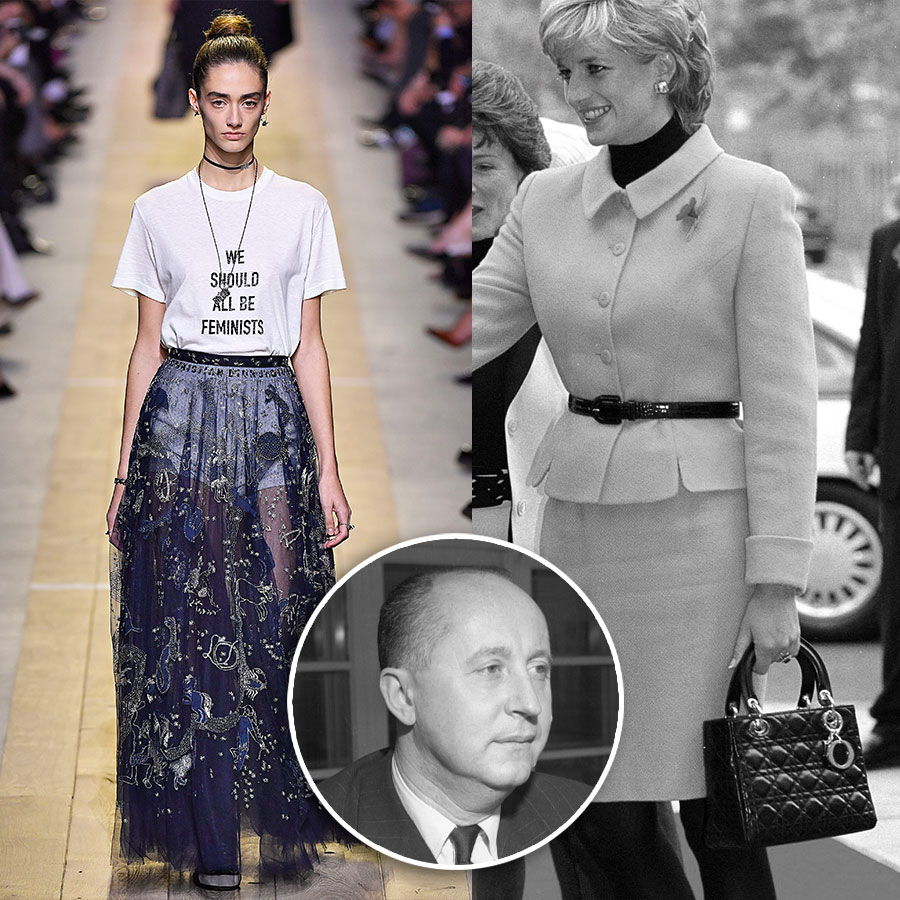
To sell the branded lingerie to accompany his cinched look, as well as fragrances and dozens of other product licenses, the publicity-friendly Dior became ubiquitous – unlike the fiercely private Balenciaga, who refused to do press or even meet with clients personally (as a friend chides him: “the only thing Christian does better than you is communicate”). Dior adored gardens and flowers and 19th century fashion and was famously superstitious (he relied heavily on the advice of astrologers and mediums).
Why he matters: Dior is credited with almost single-handedly reviving worldwide interest in Paris fashion again after the war. The New Look’s opening titles are a rhythmic hum of sewing machines blurred with the sound of locomotives and rat-a-tat-tat of gunfire – hinting at what else about his story is still relevant. Catherine Dior (played by British actor Maisie Williams), the designer’s sister for whom the Miss Dior perfume is named, was awarded the Croix de Guerre for bravery. As a member of the French Resistance, Catherine was captured and tortured by the Germans. She survived the Ravensbrück concentration camp but returned profoundly changed. Her story is essential background for High & Low, the hotly-anticipated documentary about John Galliano’s return after his fall from grace, fired as then-designer at Dior after an anti-Semitic rant (in cinemas March 15).
Carmel Snow
Now: If Carmel Snow’s name is remembered at all, it’s as the magazine editor who discovered and championed legendary fashion editor Diana Vreeland, and who worked at her side at Harper’s Bazaar for more than 20 years. Vreeland would go on to edit Vogue but her notorious oft-imitated “Why Don’t You…” columns and groundbreaking style spreads were for Snow.
Then: “Flash!” – gossip columnist Walter Winchell’s radio show – proclaimed one evening in 1948: “The romance of the year is between Carmel Snow of Harper’s Bazaar and Christian Dior.” Indeed, it was Snow who coined the phrase “new look” to describe the hyper-feminine collection Dior premiered at his fledging fashion house in 1947.
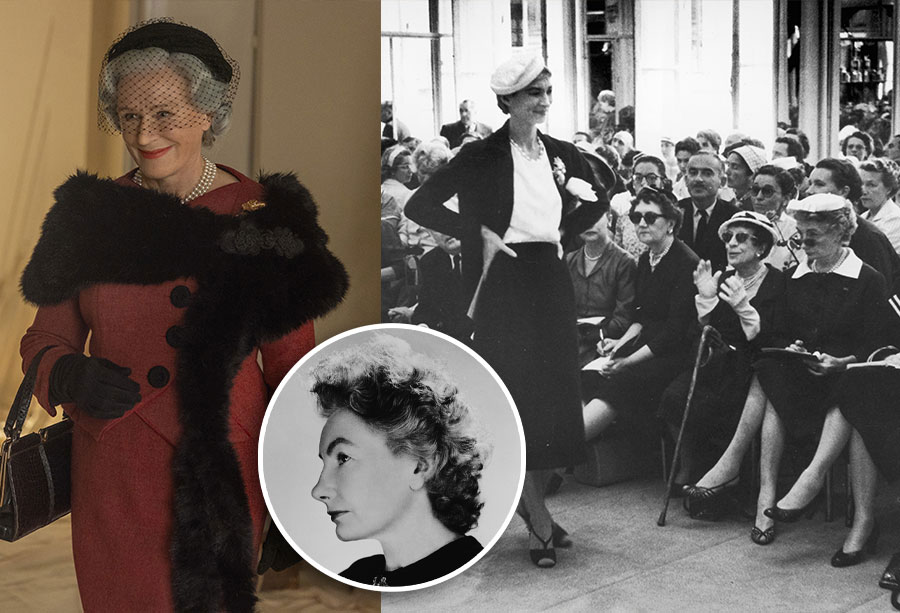
Today most people consider Vogue the luxury fashion bible but in the first half of the 20th century (and especially during French couture’s heyday), the style authority was arguably Bazaar – known for its dynamic graphic design, pioneering fashion photography and sharp opinions. Irish-born Snow worked briefly at Vogue under Edna Woolman Chase before decamping to its rival, where she reigned as Bazaar’s editor-in-chief from 1934 to 1958.
“Carmel Snow was a bit of a witch,” is how the New York Herald Tribune put it when she died in 1961. “The slim little woman was … in her time, feared, catered to, and almost superstitiously respected for her uncanny insight into unhatched fashion trends.”
Why she matters: Befitting her power, Snow figures prominently in both series’ (played by Gabrielle Lazure, 66, in Cristóbal Balenciaga and Glenn Close, 76, in The New Look). The editor was collegial with all the designers, and an especially close confidante of both Balenciaga (whose clothes she favoured) and Chanel. One thing The New Looks gets wrong is how she and everyone associated familiarly referred to the magazine. Both casually (and throughout her memoir) it was always “the Bazaar” and never “Harper’s,” as Close airily repeats.
Lucien Lelong
Now: The fashion house has been dormant since it closed in 1949; only the fine fragrances (such as Indiscret) remain.
Then: A successful designer of classic ease, in 1936 Vogue described Lelong as an “unusual combination of artist and businessman.” At one time he employed more than 1,200 people.
Christian Dior may be credited for reinventing French couture, but Lelong is the designer who saved it. Literally. During the Nazi occupation of France, the German regime wanted to appropriate and move the fabled French prowess – in its entirety – to Berlin. As head of the Chambre Syndicale de la Haute Couture (Paris fashion’s governing body), Lelong resisted. His namesake house remained open during the war, he said, in order to continue to employ thousands of skilled artisans (he is credited with saving more than 12,000 from deportation into German war industries) and therefore preserve France’s important cultural heritage and identity.
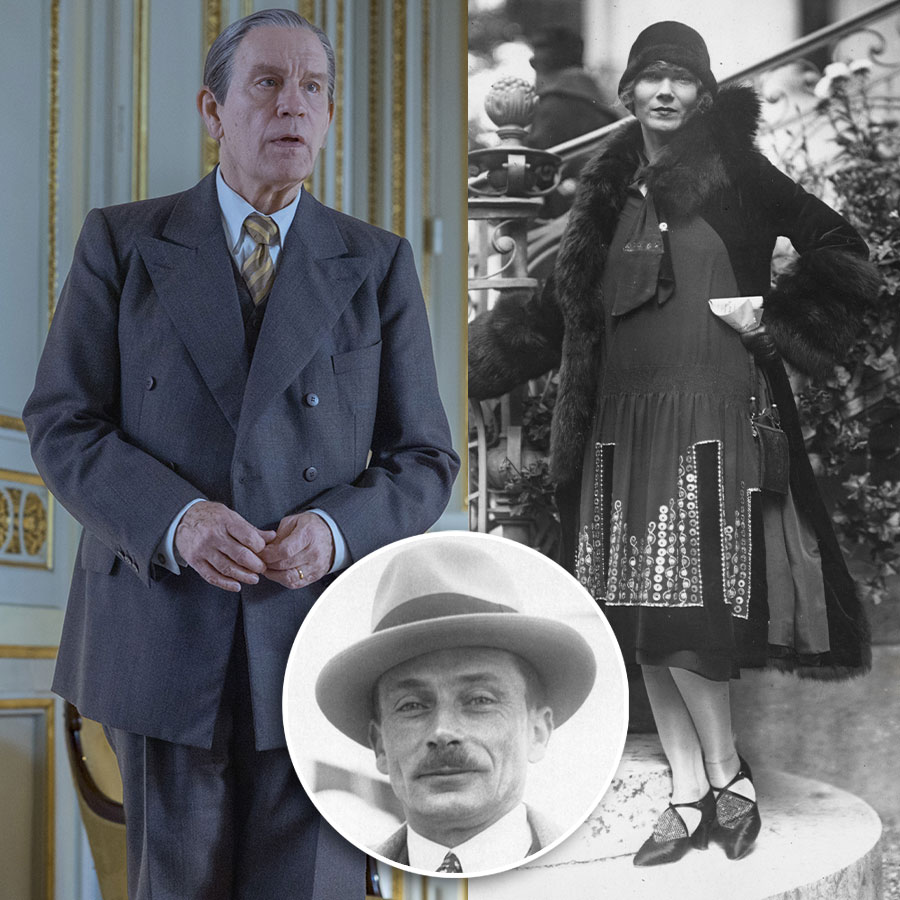
Both series spend time on another crucial contribution: the groundbreaking Théâtre de la Mode scale-model doll traveling exhibition that he and Robert Ricci devised (together with artists Christian Bérard and Jean Cocteau) immediately after the Liberation of Paris, to promote French fashion in the minds of the international public. Lelong (played by John Malkovich, 70) is important in the first half of The New Look as Dior’s kind employer and supportive but pragmatic mentor. He’s more peripheral in Cristóbal Balenciaga, as are several other major designers of the day – Jacques Fath and Pierre Balmain are portrayed lingering over dinner parties together mainly to show how collegial and intimate the industry was at the time.
Why he matters: Lelong had an eye for spotting talented young designers: his workrooms were the training grounds for emerging and ambitious designers such as Christian Dior, Pierre Balmain, Jean Schlumberger and Hubert de Givenchy.
RELATED:
Kate Moss at 50: Fashion’s Bad Girl is Now a Boss Lady Focussed on Wellness
How Do Supermodels Feel About Aging?
‘The Crown’ Costume Designers on Dressing the Queen and Other Female Royals for the Final Season